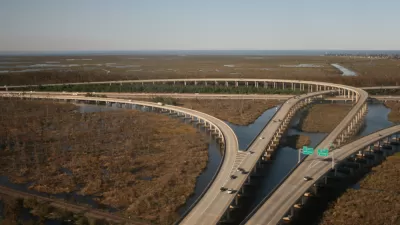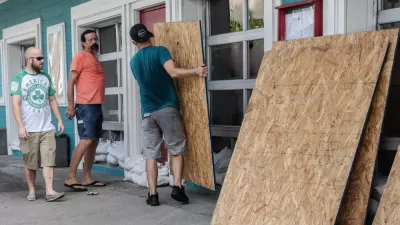Climate mitigation and adaptation have become de rigeur aspects of urban planning for most cities, according to results from MIT's international Urban Climate Change Governance Survey. What's missing in most plans is the link to economic development.

First, the good news from the Urban Climate Change Governance Survey (UCGS), conducted at MIT in collaboration with ICLEI, based on responses from 350 cities worldwide: "According to the findings, 75 percent of cities worldwide now tackle climate-change issues as a mainstream part of their planning, and 73 percent of cities are attempting both climate mitigation and climate adaptation," writes Peter Dizikes of the MIT News Office.
“Climate change isn’t an isolated issue,” says Alexander Aylettt, a postdoc in MIT’s Department of Urban Studies and Planning (DUSP), and the lead author of today’s report [PDF] (released May 29.) “It has large implications for all other aspects of urban life. What we are seeing is cities starting to build it into the DNA of how they approach urban planning.”
"But only 21 percent of cities report tangible connections between the response to climate change and achieving other local development goals," according to Aylett.
One exception is Portland, Ore., which "developed incentives, training, and regulations to help sustainable construction firms grow, while a pilot program called Clean Energy Works Portland employed 400 workers to reduce home energy use, reducing carbon emissions by 1,400 metric tons annually," observed Aylett. Another one was in Alberta, Canada.
Urban planners in Alberta, as Aylett notes, have studied the cost savings associated with limiting metropolitan sprawl and concluded that denser development could save $11 billion in capital costs over the next 60 years, and $130 million in annual maintenance. But most cities, he suggests, have simply not yet identified ways to link climate planning and economic development in the first place.
In terms of encompassing urban planning including climate mitigation and adaptation, also termed urban climate planning, the U.S. is lagging, according to survey results.
Compared with the global average of 75 percent, U.S. cities lag in planning for both mitigation and adaptation, with just 58 percent of cities addressing both.
What's interesting is that disconnect between mitigation/adaptation and incorporating climate change planning into local economic development issues may not be readily apparent in some media reports on the MIT News Office story. "Climate Change is Now Part of Global Urban Planning" is the title of the Science World Report article, for example. You just have to read deeper to find it.
FULL STORY: Global survey: Climate change now a mainstream part of city planning

Alabama: Trump Terminates Settlements for Black Communities Harmed By Raw Sewage
Trump deemed the landmark civil rights agreement “illegal DEI and environmental justice policy.”

Study: Maui’s Plan to Convert Vacation Rentals to Long-Term Housing Could Cause Nearly $1 Billion Economic Loss
The plan would reduce visitor accommodation by 25% resulting in 1,900 jobs lost.

Planetizen Federal Action Tracker
A weekly monitor of how Trump’s orders and actions are impacting planners and planning in America.

Waymo Gets Permission to Map SF’s Market Street
If allowed to operate on the traffic-restricted street, Waymo’s autonomous taxis would have a leg up over ride-hailing competitors — and counter the city’s efforts to grow bike and pedestrian on the thoroughfare.

Parklet Symposium Highlights the Success of Shared Spaces
Parklets got a boost during the Covid-19 pandemic, when the concept was translated to outdoor dining programs that offered restaurants a lifeline during the shutdown.

Federal Homelessness Agency Places Entire Staff on Leave
The U.S. Interagency Council on Homelessness is the only federal agency dedicated to preventing and ending homelessness.
Urban Design for Planners 1: Software Tools
This six-course series explores essential urban design concepts using open source software and equips planners with the tools they need to participate fully in the urban design process.
Planning for Universal Design
Learn the tools for implementing Universal Design in planning regulations.
Caltrans
Smith Gee Studio
Institute for Housing and Urban Development Studies (IHS)
City of Grandview
Harvard GSD Executive Education
Toledo-Lucas County Plan Commissions
Salt Lake City
NYU Wagner Graduate School of Public Service





























